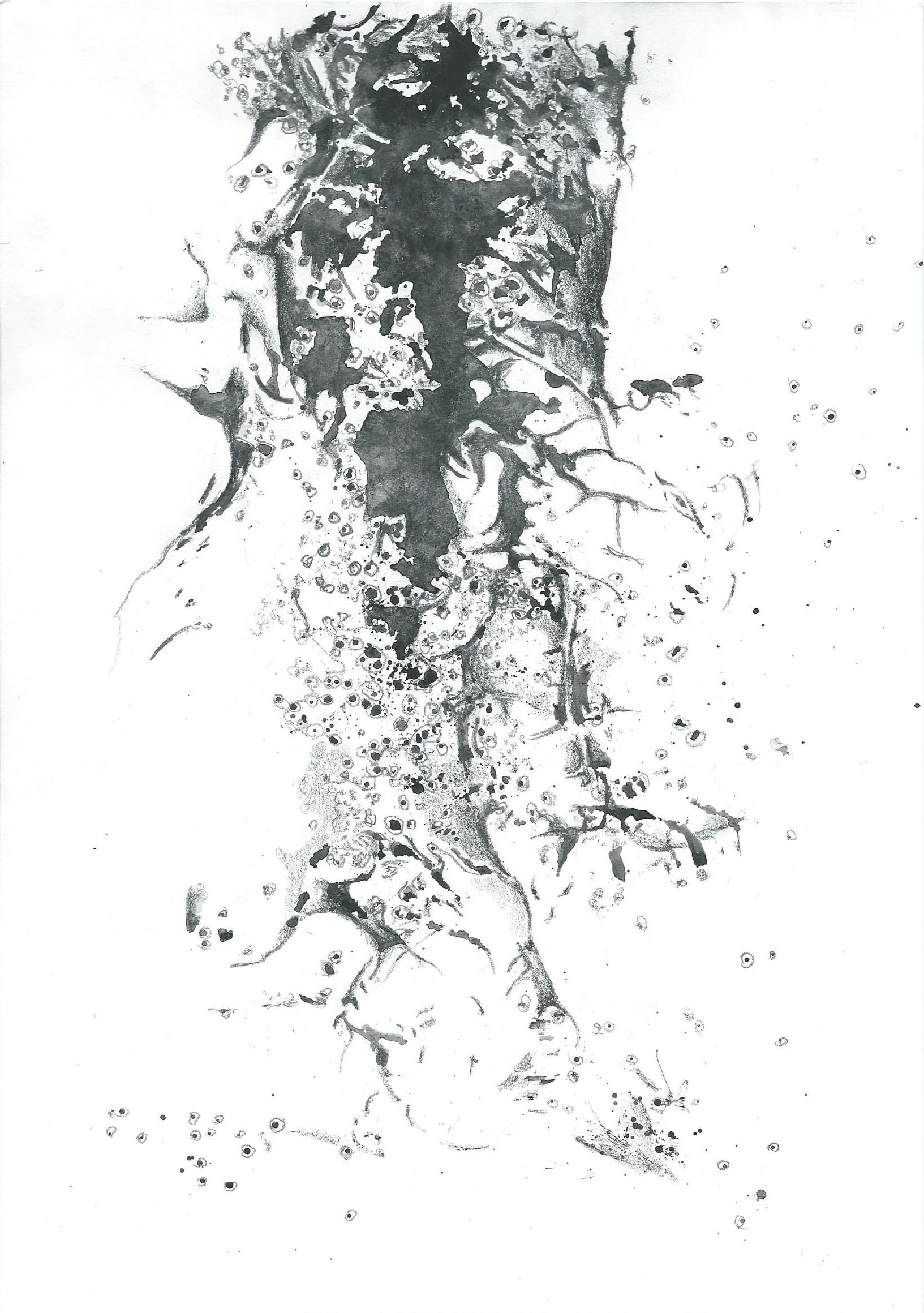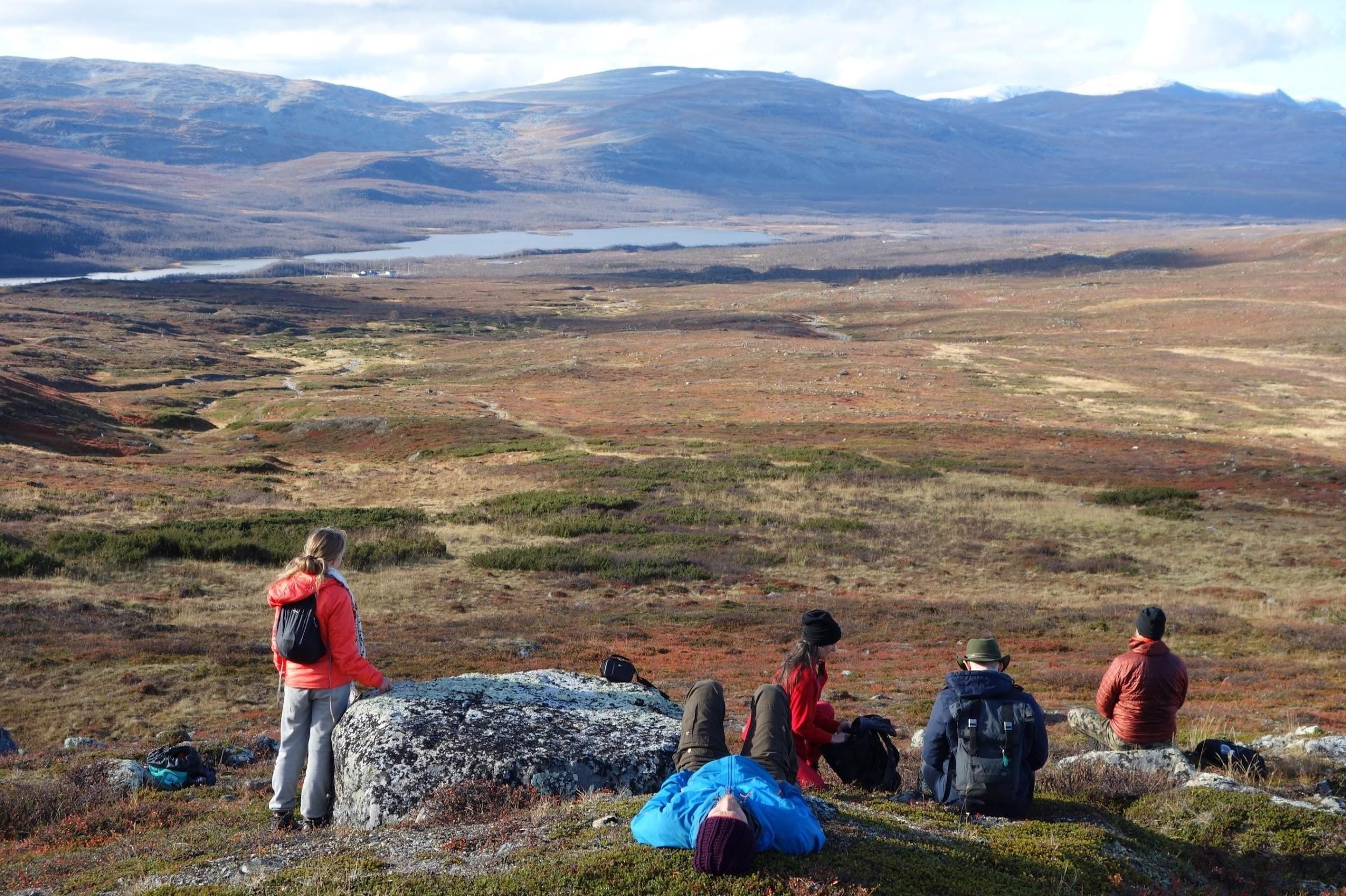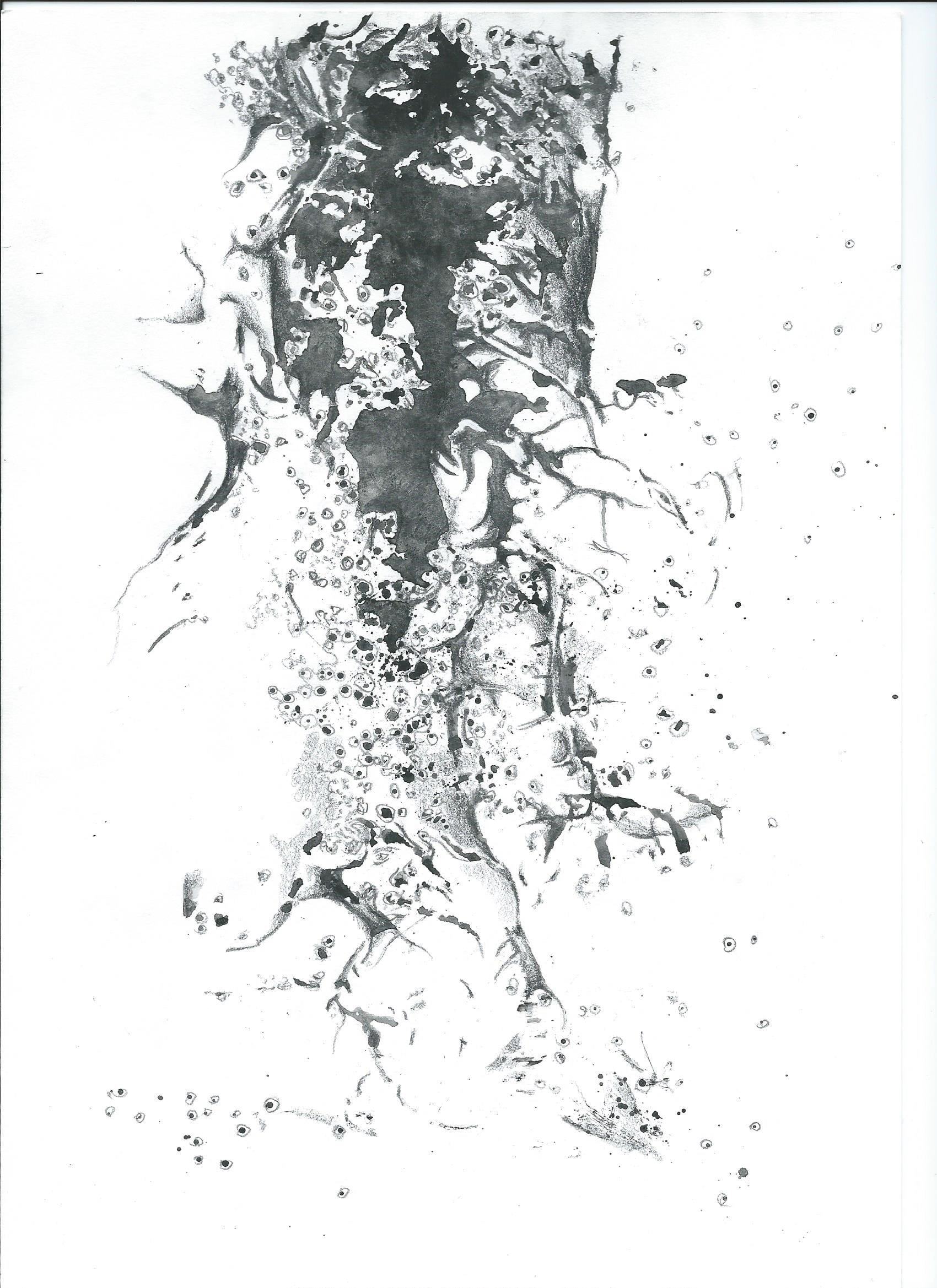This is the final entry in a series organized by Hannah Star Rogers, reflecting on the 2018 convening of the Helsinki-based Bioart Society. The first entry was “Field_Notes: Expanding the Possibilities of Bioart”; the second was “Field_Notes: The Technology of Divination.”
The Bioart Society’s Field_Notes meeting is held in the fall at the Kilpisjärvi Biological Station in far northern Finland. The Society brings together the expertise of artists, scientists, and humanists to explore the environment of Sápmi and to consider a chosen theme. The 2018 gathering was designated “Ecology of Senses.” Each program includes a set of hosts who focus on a combination of themes and practices brought together by their group and individual expertise. As part of the 2018 Field_Notes, I hosted the “Second Order” group, tasked with observing and intervening in the work of the other groups. My research on art and science had included bioart, through interviews of practitioners and an ethnography of the labs at SymbioticA, but as early winter fell on Kilpisjärvi, I found a group of practitioners with a wide array of modes and methods that extended beyond traditional conceptions of bioart.

Field_Notes: Ecology of Senses is a weeklong field laboratory experience, organized by Bioart Society based in Helsinki, Finland, that was held at the Kilpisjärvi Biological Station in September 2018. The mixing of a range of participants and practices can be productively understood through the concept of the amalgam, mixtures that become entangled in ways that are difficult to separate back into parts. The irreducibility of the amalgam as a construct reveals the original categories preceding the act of mixture as constructions themselves. There are geological and mathematical amalgams, wherein formerly separately defined entities can be treated and understood as single entities.
While there are many versions of amalgams that might yield different metaphorical resources, I have in mind the geological form of plastiglomerates. These monstrous amalgams created a brief internet sensation about five years ago, when people began scouring seashores for plastic that had been fully incorporated with stones and shells, likely bonded by beach fires. Bioart Society members Kristina Lindström and Åsa Ståhl of Malmö and Umeå University, Sweden, even led shore walks to look for them. These evocative objects seemed be a material instantiation of the Anthropocene, a way to hold in one’s hand a new mixture of human and nonhuman agency. The collective fascination with plastiglomerates reflects deeper concerns about the relationship between the natural and the made. During Field_Notes, the amalgams of practices surrounded and bonded to the questions of the categorizing of the natural and the made. These amalgams were made by mixing the use of scientific tools into aesthetic practice, bringing together multiple perspectives through group sensing of the land, and assembling layers of artistic practice that catalyze discussions about similar subjects using different methods or tools.
Instruments originally developed for scientific use are employed by artists to elucidate the sublime, and drawing techniques developed in art are used by scientists to facilitate geological identification. But even these examples make too clear a distinction between these entwined practices. As discussed in “Field_Notes: The Technology of Divination,” instrumentation offered participants at Field_Notes something to do: it directed our habits toward the possible affordances of the instruments and novel uses of those tools. Only if we are willing to reify art and science to the point of a stereotype does it become easy to disentangle the methods, scientific instruments, and training of these two knowledge communities. In practice, both artists and scientists engage in personal experiences of experiments, the environment, and outcomes shared with peers and the public.
One binary that is sometimes incorrectly mapped onto science and art is that of the natural and the made. Both art and science communities use these concepts in different ways, with more or less knowledge about the degree to which they are rhetorical constructions. An understanding of constructions, like the natural and the made, can transform them into productive borders for considering our perceptions of the world, and, therefore, for art- and science-making. When the natural and the made are understood in their historical, social, and political contexts, this serves to complicate easy divisions between art and science.
Eminent historian of science Lorraine Daston has explored the construction of the border of the natural and the artificial in her influential essay “Nature by Design” by demonstrating how historical notions of these divisions differ from our own.1 Among Daston’s examples is the case of the Ptolemaeus cameo, also known as the Ptolemaeer Cameo, now held at the Kunsthistorisches Museum, Vienna. While to a modern viewer, the cameo appears to be an artwork made by humans, scholar and natural philosopher Albertus Magnus (1193–1280) wrote that the object was natural and that many more like it had been found.

Daston asks readers to set aside their preconceived notions of the natural and the artificial to consider the characteristics Magnus examines. To the example of the cameo, Daston adds the case of gongshi or scholar’s stones, which had been prized in China since the Tang Dynasty and begin to appear in European collections in the early modern period. These objects were perceived as carved at the time, but interpreted as “natural” in the contemporary moment. With these materials and their interpretations, she concludes that shifts in our definitions have led to these perceptual differences. While we may have a general collective understanding of how the natural or the made is constituted, that does not mean that these ideas are stable; still, they may be useful. Understanding that we can not only create new amalgams of the natural and the artificial, but that the definitions of those ideas are themselves in flux, can offer us new ways of conceptualizing art and science work. This knowledge frees us from a reliance on current definitions as the only possibilities. Plastiglomerates slot into Daston’s framework: these mixtures of materials generally associated with the made and the natural offer to complicate anew understands of these concepts.
Definitions of the natural and the made have been sites of productive thought in areas as diverse as literature and evolutionary science. In a recent article, S. Andrew Inkpen offers a series of questions around art and nature: Was art part of nature? Could art be used as a model of nature?2 Inkpen offers an analysis of the early chapters of Charles Darwin’s On the Origin of Species. Contrary to popular accounts, which tend to emphasize Darwin’s heroic exploration and encounters with isolated populations like those in the Galápagos Islands, James Costa has shown that Darwin’s reasoning began much closer to home.3 On the Origin of Species begins with Darwin comparing nature to a breeder, suggesting that principles of domestic breeding were at work in nature’s selections, suiting organisms for their current environments. Many objected to Darwin’s views precisely on these grounds: that humans were apart from nature, and so it was incorrect to assume that nature might operate in a fashion similar to the way farmers and herdspeople made decisions about cultivating new organisms.
These questions, Inkpen notes, already existed in the currency of conversation around nature and art by the time Darwin was writing. In The Winter’s Tale (1623), Shakespeare offers an exchange on this subject between the shepherdess Perdita and the King Polixenes, which lays out the terms quite clearly. In their exchange, we may even hear echoes of some of the current debates around interventions in nature, precisely on these grounds, arguing instead that humans were apart from nature. Perdita explains that
Not yet on summer’s death, nor on the birth
Of trembling winter, the fairest
flowers o’ the season
Are our carnations and streak’d gillyvors,
Which some call nature’s bastards: of that kind
Our rustic garden’s barren; and I care not
To get slips of them.
But the King admonishes her to “make your garden rich in gillyvors, / And do not call them bastards” because “the art itself is nature,” a common sentiment among defenders of interventions in nature. But Perdita has the last word and refuses the proposed horticultural additions, saying that
I’ll not put
The dibble in earth to set one slip of them;
No more than were I painted I would wish
This youth should say ’twere well and only therefore
Desire to breed by me. Here’s flowers for you;
Hot lavender, mints, savoury, marjoram;
The marigold, that goes to bed wi’ the sun
And with him rises weeping: these are flowers
Of middle summer, and I think they are given
To men of middle age. You’re very welcome.4
While conversations at Field_Notes may not have been as eloquent, direct, or cutting as Perdita and the King’s, we shared common concerns about what counts as a natural or a constructed landscape, as well as a critical reflection on the degree to which our esteem for these categories played a role in decisions about sampling, depicting, and representing the environment. Even as Perdita declares newly bred flowers to be “bastards,” she is participating in cultivation through creating the artwork of a garden filled with contrasting colors and flower forms. Her exchange with the King may not have changed her actions or either of their minds, but it does reveal new dimensions to the debate. Collective and individual experiences of the environment as natural and made combined with personal and collective perceptions are at the core of Field_Notes.
Just as Perdita tried to hold on to a conception of the natural even as she built a garden, Field_Notes participants could see the mark of human activity on the land and were aware of the limitations of the “naturalness” of the environment within the Nature Reserve in Kilpisjärvi. Specific conservation and management decisions, like the rules governing reindeer herding, the addition of hiking huts and paths, and the encouragement of some botanical species and the control of others, had been and are being made. Yet, even with a critical understanding about the constructedness of nature within this environment, our conversations about protecting the environment, and desires to find meaningful orientations toward its natural features, were abundant. These ideas performed conceptual work for artists and researchers in experiencing their surroundings and influenced the experience of Field_Notes.
Those conversations and the experience of encountering an environment in the company of a group affected individual interpretations of the environment. Those influences—and the exchange of ideas about how to interpret or simply be with and in an environment—are central to the Field_Notes experience. Layers of interpretation of place and organism abounded. One of the most obvious conversations was around participants’ perceptions of the environment as pristine or at least set apart from familiar landscapes. However, in the same vein of layers of interpretation, Leena Valkeapää, a local expert and mentor to the Bioart Society’s residency program, pointed out the signs of activity and use by skiers, hikers, and other recreators, as well as the reindeer grazed on the land. This transformed many participants’ understandings of what they were seeing in the field.
How lands are defined, as ranges for organisms, portions of countries, and native places were also a subject of conversation. Most of the participants used the term Lapland, which is the name of the northerly municipality of Finland where were located. But other names, and therefore, interpretations are possible: Sápmi refers to the land of the Sami people, which includes the northern portions of Norway, Sweden, Finland, and Russia. Valkeapää also raised the idea of “the North,” which for some readers and listeners avoids emphasizing either the environmental or political over one another.
One group that looked into layers of interpretation and group sensing was “Surfing the Semiosphere,” led by anthropologist/archaeologist and geosciences expert Judith van der Elst. This group came together to experience, explore, and inventory carriers of significance in often radically different subjective worlds within the larger electric and magnetic fields in which we are all “suspended.” The “Second Order” group, which I hosted, took up a specific task: its members were divided among the other groups to observe and intervene in the proceedings by following other groups and joining their members in activities throughout each day. Then, using techniques drawn from a variety of disciplines (particularly writing methods), the Second Order group worked together to process its findings about the patterns and differences among the groups. In this final entry in the series, we direct our attention to different ways of thinking about the role of their groups’ framings in what how we saw, communicated, manifested, and considered during our time together.
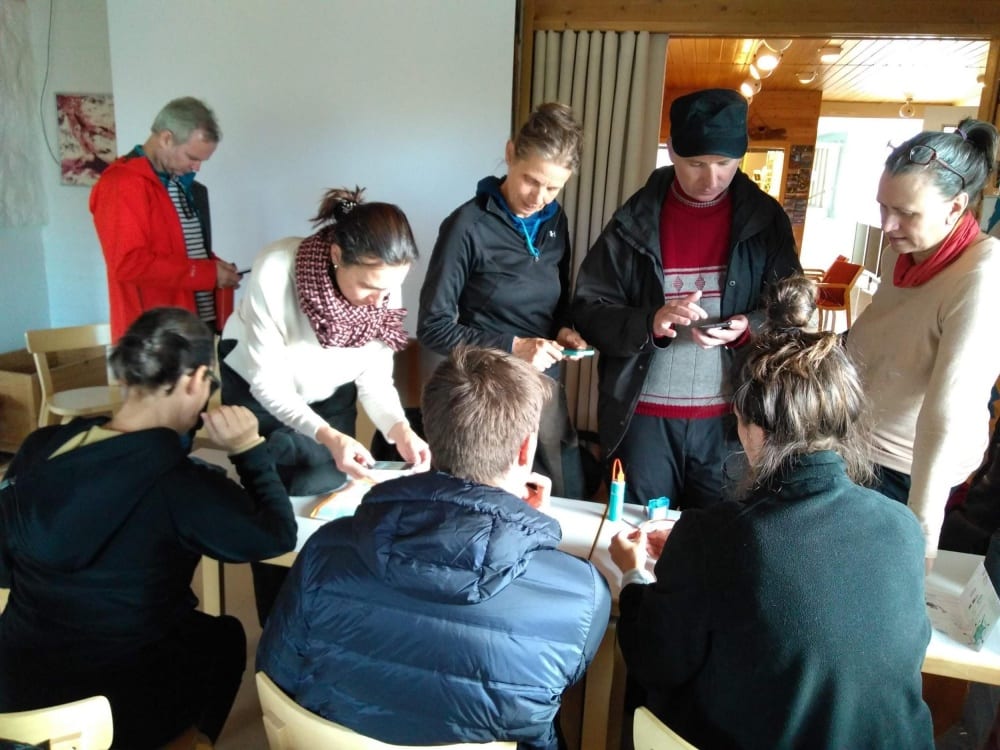
Judith van der Elst explores her “Surfing the Semiosphere” group’s experience. This group, comprising Björn Kröger, Pia Lindman, Neal White, Paolo Patelli, AnneMarie Maes, and Christina Gruber, explored its interest in the way organisms perceive and react to certain sensory data. It took a particular interest in the nature of nonhuman signaling systems with a focus on collective sensing. The group figured this process by talking about its activities together as the work of a unified entity, rooted in biosemiotics, the study of the production and interpretation of signs and codes in the biological realm. The group also drew on nineteenth-century German biologist Jakob von Uexküll’s concept of the Umwelt, the world as it is experienced by an organism. The semiosphere is the area in which sign processes operate, in short a way of talking about sphere of interconnected Umwelten. In the spirit of this collective view of the environments they were encountering, the group strove to experience the world as a collective using the metaphors from nonhumans like lichen. Van der Elst authored a piece from the perspective of her group as a commingled entity, which described the experience of surfing northern Finland’s many signals.
In contrast to this contribution based on a group vision, Alice Smits offers a single observer’s documentary of the many moving parts across formal and informal assemblages of practitioners exploring and wandering the environment around the Kilpisjärvi Biological Station in her first film, Tracing the Land. The short film begins with a repeating light but hollow sound; the noise gives way to the vision of walking: the sound is that of boots against wooden pathways. From the beginning, we see the requirements of humans in the landscape—interventions like the boards for walking in marshy terrain made muddy by human footsteps. Smits’ film is a collection of her individual observations that are ultimately linked to a collective sense of patterns in human behavior in the environment of the far North.
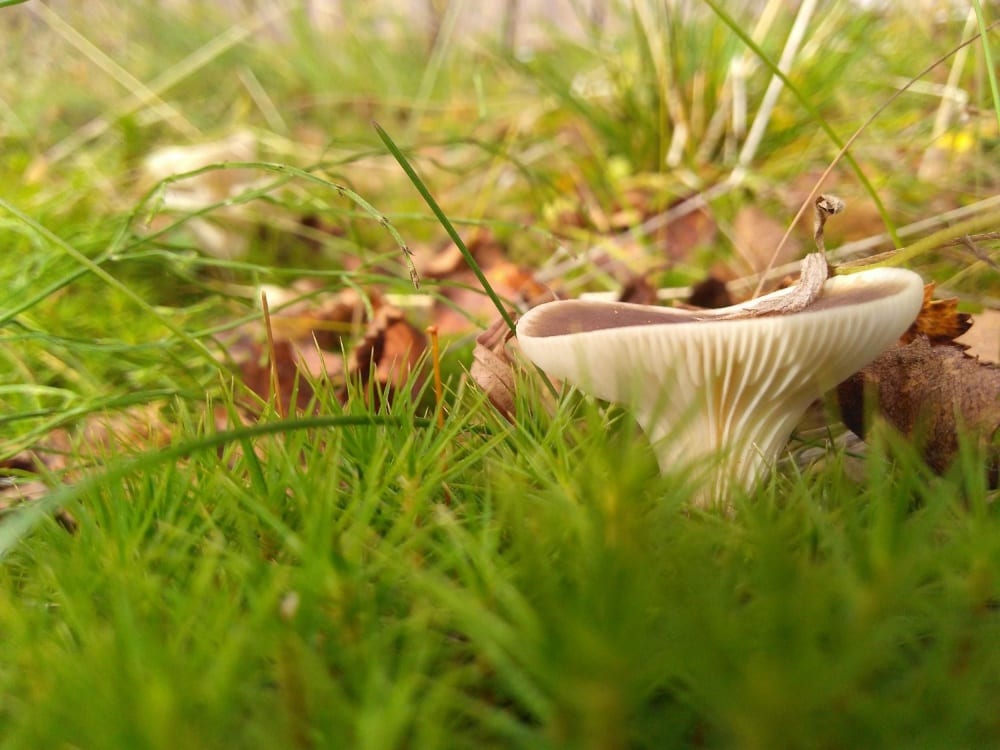
Both contributors consider their own viewpoints in relation to those held by a group; the contributions at the same time represent groups through personal experiences. Van der Elst adopts a creative plurality of voices in her writing and proposes that the idea of “I” needs rethinking, suggesting that the “I” that appears across her essay is inspired by the group experience, an idea in turn inspired by the abundance of lichens in the area. While the Semiosphere group strived to become a collective “I” in their activities of sensing the semiosphere, Smits’ approach recognized her position as a member of the Second Order group. Smits moved between other groups; her film and writing invite us to see commonalities and differences between various group practices. Smits’ filmic approach is more curatorial, or even anthropological, as she is documenting groups in which she was both a participant and an observer.
The power of the plastiglomerate derives from our quick assumptions about the imagined relationship between geology and ourselves. Thinking about these objects to help us overcome easy divisions between the natural and the made. The notion of the amalgam can help us extend that into other binary categories that in practice are much more complex, like the convergence of art and science, especially in contexts like the Bioart Society. As the earth fills with plastiglomerates, we should not forget that questions of the natural and the made have long histories that can help us contextualize our present. Perhaps we are not living in the age of amalgam so much as the age of the recognition of the amalgam. The rhetorical constructs that separate art from science and the natural from the made offer opportunities to see the changing frames of reference around concepts that may seem simply and separately defined. Amalgams highlight the contradictions inherent in our standard definitions of these ideas. This recognition can be productive for understandings the stakes of those rhetorics and the uses of the terms in situ. What is revealed are the limitations of some of our tried definitions which hail from viewpoints limited by factors including different as social context and historical period. The following entries experiment with ideas about viewpoint by offering amalgams of a different sort: the amalgam of individuals sharing an experience in Van der Elst’s piece contrasts with the amalgam of experiences from across the groups in Smits’ piece. These perspectives may offer new ways of conceiving of the relationship between the natural and the made.
Click on the images by the authors below to navigate to contributions by Alice Smits and Judith van der Elst.
Hannah Star Rogers researches the intersection of art and science, particularly critiques of science in contemporary art. Her publications have appeared in Leonardo, Configurations, The Kenyon Review, and the LA Review of Books. She received an MFA from Columbia University and a PhD from Cornell University in Science and Technology Studies. Her exhibition Making Science Visible: The Photography of Berenice Abbott received an exhibits prize from the British Society for the History of Science and an invited lecture to the Smithsonian Archives of American Art. She is past Director of Research and Collaboration for Arizona State University’s Emerge: Artists and Scientists Redesign the Future. Her current curatorial project Art’s Work in the Age of Biotechnology: Shaping our Genetic Futures will open in fall 2019. She is a visiting scholar in STIS at the University of Edinburgh and teaches at Strathclyde University.
- Lorraine Daston, “Nature by Design” in Picturing Science, Producing Art, ed. Caroline A. Jones and Peter Galison (London: Routledge, 1998), 232–53. ↩
- S. Andrew Inkpen, “‘The Art Itself Is Nature’: Darwin, Domestic Varieties and the Scientific Revolution,” Endeavour 38, nos. 3–4 (2014): 246–56. ↩
- James T. Costa, Darwin’s Backyard: How Small Experiments Led to Big Theory (New York: W. W. Norton & Company, 2018). ↩
- William Shakespeare, The Winter’s Tale, ed. Stephen Orgel (New York: Oxford University Press, 1996). ↩

